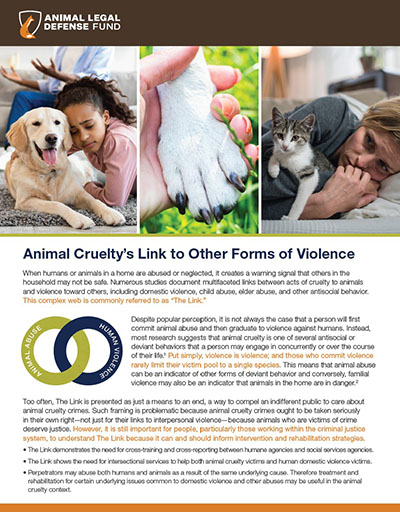Animal cruelty has long been a subject of distress, yet it often garners more than just outrage; it serves as a harbinger of social malaise. The relationship between cruelty towards animals and violence against humans unveils an intricate web of psychological, sociocultural, and economic dynamics. Understanding this correlation is paramount, as it reveals not only the immediate effects on our furry companions but also implications for human society at large.
The phenomenon of animal cruelty is not merely an isolated act of aggression directed at non-human species; it is a symptom of deeper societal issues. Numerous studies have substantiated the hypothesis that individuals who exhibit violent tendencies towards animals often extend this behavior towards humans. This pattern prompts the question: what underlying psychological mechanisms catalyze this escalation from animal abuse to human violence?
At the core, the propensity for violence is often influenced by a lack of empathy. Empathy, the ability to connect emotionally with others, is a crucial trait that inhibits aggressive behavior. Research suggests that individuals guilty of animal cruelty often display significant deficits in empathetic capacity. This deficiency can stem from various factors, including childhood trauma, exposure to violence, or environmental instability. Such experiences can deform one’s emotional framework, making it difficult for them to recognize or respect the feelings of other beings, be they animal or human.
Additionally, the desensitization to violence plays a critical role in this evolution. Once an individual engages in acts of cruelty, each subsequent act often becomes easier, reinforcing a cycle of desensitization. Engaging in animal cruelty may serve an almost cathartic effect for some, providing a temporary release of pent-up frustrations or emotions. This troubling form of catharsis, in turn, augments their psychological disconnection from the suffering they inflict, further blurring the lines of morality.
Cultural dimensions also merit examination when considering the ties between animal and human violence. Societies that endorse hierarchical power structures tend to normalize cruelty. In cultures where domination over the weak is valorized—be it through animal husbandry practices characterized by exploitation or through acceptance of interpersonal violence—individuals may, consciously or subconsciously, absorb these lessons. Thus, the normalization of animal suffering creates an environment wherein human suffering can similarly be trivialized.
Addressing the cyclic nature of violence is essential. A significant proportion of domestic violence situations often involves animals; pets can become collateral damage in abusive households. Victims of domestic violence may also delay their escape due to concerns for their pets’ safety. This interdependence between animal and human welfare underscores the urgency of addressing domestic violence holistically, where including animals in protection plans may not just save lives but also foster healthier relationships.
Moreover, it is imperative to discuss the role of socioeconomic factors. In impoverished environments, a lack of resources can exacerbate the propensity for both animal and human violence. Families struggling to meet their basic needs may resort to harsh disciplinary methods, not just for their children but potentially for pets as well. Such environments become breeding grounds for violence—a vicious cycle that perpetuates suffering across all living beings within the space.
Interventions at the community level can instigate positive change. Educational programs focused on humane treatment of animals can cultivate empathy among children, establishing a foundation for respect towards all living beings. Engaging youth through creative arts, volunteer programs, or even animal-assisted therapy has shown promise in nurturing compassion and mitigating the risk factors associated with future violence.
Furthermore, policy reform is a necessary measure to disrupt the cycle of violence. Strengthening animal cruelty laws can act as a deterrent against abuse, sending a clear message about the unacceptable nature of such acts. Programs aimed at offenders, including counseling and psychological support, can help address the roots of their violent tendencies, paving the way for rehabilitation rather than mere punishment. Such reform also acknowledges the potential for change, thereby inspiring hope in individuals who may feel trapped in their cycles of harmful behavior.
On a broader scale, the discourse surrounding animal rights and welfare must be integrated into the framework of human rights advocacy. The intersectionality of these issues compels society to forge a multi-faceted approach that recognizes the interdependent welfare of animals and humans. Advocating for animal rights not only enhances the quality of life for our non-human counterparts but also serves as a pivotal step towards fostering safer communities.
In conclusion, the dialogue about the link between animal cruelty and human violence must extend beyond mere observation; it demands thoughtful action. The connection is not only a reflection of individual pathology but also a manifestation of societal dysfunction. By nurturing environments that foster empathy and respect—bolstering legislation, enhancing education, and providing support to those in need—we can work towards breaking the cycle of violence that binds both animals and humans alike. To ignore this connection is to overlook a fundamental truth about the fabric of our society—our treatment of animals mirrors our treatment of each other. It’s a clarion call for justice that must resonate deeply within our collective consciousness.






